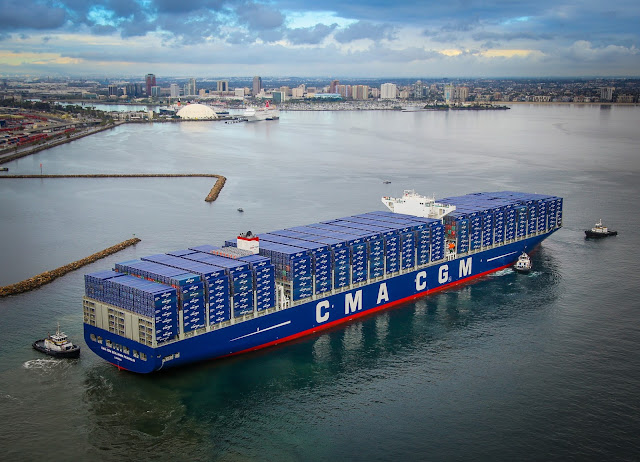India wants to shift gears from a service based economy to a manufacturing one. To promote local manufacturing, the government of India rebooted the Make in India scheme. It’s brand ambassadors, the lion and PM Modi were seen worldwide meeting investors and entrepreneurs aiming to improve India’s manufacturing GDP ratio. Processes were simplified and red carpet was laid instead of red tape, pushing India’s Ease Of Doing Business rank by 30 points. No other large country like India has seen such a large jump and with GST, India may soon match with the rank of China.
China’s leap into being ‘the factory of the world’ could be accomplished with its near-coast economic zones. Out of top 10 mega-ports in the world, China has 8 of them and mostly on the east side of the country. Economists say that nearly 75% of China’s GDP growth comes from Eastern cities and economic zones. With economic zones near ports, China could reach out to global markets sooner. Within two decades, China created more than 20 brand new cities with more than 5 million population on China’s east coast. With megacities, came high paying industrial jobs and small medium enterprises.
According to a 2009 Asian Development Bank study, only 10.5% of manufacturing workforce in India was employed in firms larger than 200 workers compared to China’s 51.8% in 2005. At the other extreme, 84% of India’s manufacturing workforce was in firms with less than 50 workers compared to China’s 24.8%. These differences translate into substantially lower average labour productivity and wages in India than China.
Unfortunately, large firms are missing in India in precisely the sectors in which they are needed the most: employment-intensive sectors such as apparel, footwear, electronic and electrical products and host of other light manufactures. These are products in which China has done well thereby generating a large volume of good jobs for its workers. In 2014, the country exported $56 billion worth of footwear compared with $3 billion by India and $782 billion worth of electrical and electronic goods compared with $9 billion by India.
Shenzhen, one of the early coastal economic zones of China is today world’s largest electronic manufacturing hubs. Almost 90% of mobiles which we use today here in India are made in Shenzhen. Oppo, Vivo, OnePlus, Foxconn (Apple & LYF mobile), Samsung have huge manufacturing plants in Shenzhen. The market of mobile parts in so spread that it is almost impossible to make a truly Make In India smartphone. Today, Shenzhen has a population of 11 million and it boasts of gross city product of $265 billion. With an aging population and growing wages, Multinational companies are looking elsewhere in Malaysia, Vietnam or India. Coastal Economic Zones conceptualised under Sagarmala by NITI Aayog and Ministry of Shipping could be India’s greatest turnaround opportunity.
Special Economic Zones nearby Gujarat and Mumbai account to 60% of India’s export. With an aim to provide impetus to Make in India, 14 Coastal Economic Zones are conceptualised under the National Perspective Plan of Sagarmala. The CEZs have been conceptualized as a spatial-economic region which could extend along 300-500 km of coastline and around 200-300 km inland from the coastline. Each CEZ will be an agglomeration of coastal districts within a State.
Leveraging the port eco-system these CEZs will provide the geographical boundary within which port led industrialization will be developed. The CEZs have been envisaged to tap synergies with the planned industrial corridors like Vizag Chennai Industrial Corridor and Delhi Mumbai Industrial Corridor. There is immense scope for logistic cost reduction under Sagarmala and CEZ is an effort to reduce cost by locating the manufacturing centres closer to the ports thereby making Indian trade competitive in the global market.
Leveraging the port eco-system these CEZs will provide the geographical boundary within which port led industrialization will be developed. The CEZs have been envisaged to tap synergies with the planned industrial corridors like Vizag Chennai Industrial Corridor and Delhi Mumbai Industrial Corridor. There is immense scope for logistic cost reduction under Sagarmala and CEZ is an effort to reduce cost by locating the manufacturing centres closer to the ports thereby making Indian trade competitive in the global market.
India’s first coastal economic zone will come up near JNPT Port in Navi Mumbai, a satellite town of a mega-city Mumbai. JNPT CEZ has added the advantage of having two major ports (JNPT Port and Dighi Port) in its vicinity, where JNPT Port could be exclusively used for export the product due to its depth and Dighi Port could be used for the local supply of goods. Another added advantage would be upcoming Navi Mumbai International Airport and Mumbai Transharbour Sea Link. As per the plan, JNPT CEZ will focus on electronic, telecom, automobile and IT goods manufacturing.
As reported in Economic Times, about 45 companies across telecom, auto and IT sectors will soon bid for 200 hectares of land to set up manufacturing units in the zone. JNPT CEZ will provide 1.5 lakh jobs to people staying in Mumbai Metropolitan Region and affected villagers. iPhone maker Foxconn is looking to invest in 13-acre land in JNPT CEZ. Major automobile giants are in talks with the ministry to set up a plant. The entire land distribution will be done under e-tendering process. It’s proximity to Mumbai could also mean realty bonanza on outskirts on JNPT CEZ.
- Chaitanya Kulkarni (twitter.com/chai2kul)


No comments:
Post a Comment